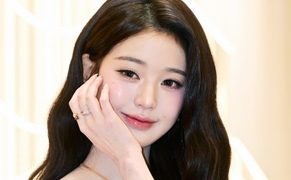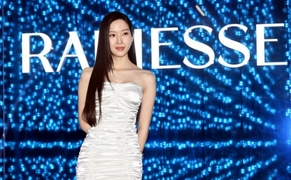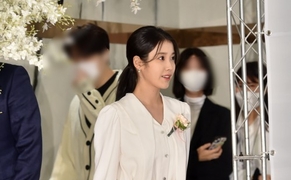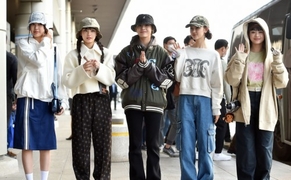An opera that tries to overcome the limitations of the original 'Madama Butterfly'.
 |
| ⓒTokyo Nikikai Opera Theatre Madama Butterhly photo by Masahiko Terashi |
There are many factors that distinguish modern operas from works of past eras, but modern reproductions of classical operas, which cannot alter the original score and libretto, are often limited in many ways. Nikikai Opera Tokyo's (Nikikai) production of ‘Madama Butterfly’ at the Ueno Tokyo Cultural Center is a unique experiment in pushing the envelope in this regard.
This production is not a premiere, but rather a Japanese revival of a production that debuted in Tokyo in 2019, followed by performances at the Dresden Semperoper in Germany in 2022 and the San Francisco Opera in 2023. One of the big reasons for the buzz is that the costumes for this production were designed by world-renowned Japanese fashion designer Kenzo Takata. Kenzo Takata, also known as the Magician of Colors, was a world-renowned haute couture designer known for his beautiful patterns and colors, but sadly passed away in Paris in 2020 due to the covid. Although Nikikai occasionally invites foreign conductors and directors, the cast is composed entirely of Japanese singers in an effort to solidify its identity as a Japanese opera. This performance will be directed by Amon Miyamoto, who often directs Nikikai's operas. A Tony Award winner, Miyamoto is a mid-career Japanese director who has worked in musicals, theater and opera.
The opera "Madama Butterfly" is a work about which Japanese people have ambivalent feelings. While it is significant that a famous opera set in Japan over 100 years ago and featuring a Japanese woman as the main character was created, it also has an uncomfortable plot in which the woman is the victim of a malicious marriage by a white Western man and ends up taking her own life. I've been curious about Japanese audiences' views of this opera in the past, and have attended several local productions of "Madama Butterfly" to observe them. From what I've seen, Japanese audiences have generally accepted the opera as an opera and paid little attention to its artistic elements, but it seems that there are other perspectives. Amon Miyamoto, who directed this production of ‘Madama Butterfly’, intervened enough to change the overall structure and put his own spin on the work.
 |
| ⓒTokyo Nikikai Opera Theatre Madama Butterhly photo by Masahiko Terashi |
In this opera, the curtain opened before the overture, and the stage was a Japanese-style room with a patient's bed. The patient is Pinkerton, the male lead, on his deathbed, and at his side is his son, now a grown man, born to his second wife, Kate, and Cho-cho san. This is a dramatic setting that does not exist in the original. The opera takes place in Pinkerton's present, where he struggles with regrets about his impending death and his past with Cho-cho san. Their grown son suggests that a long time has passed since Cho- cho san's death. Throughout the couple's relationship, betrayal, separation and death, the son becomes an observer, gesturing pleadingly and lamenting, and the whole process felt convincing without being forced.
In this work, Amon Miyamoto said he wanted to say that "Madama Butterfly(Cho-cho san) was not an unhappy woman. In his view, Pinkerton is portrayed as desperately regretting leaving Cho-cho san. At the moment of her death, she comes to greet Pinkerton, holds his hand, and leaves this world. This is interpreted as Pinkerton's way of saying that Cho-cho san was not an unhappy woman who was abandoned.
This interpretation of the score and libretto is evident in several places. After the wedding scene in Act I, Cho-cho san continues to wear Western dresses. This is perhaps not surprising, since she has rejected all things Japanese and looks upon her American husband and America with envy. For most of the opera, however, Cho-cho san is always in a kimono. A Japanese woman who longed for America would have worn a suit, and I think that's something we as Westerners have missed. Kenzo Takata really captured that point. In the wedding scene in Act I, the stage was decorated with beautiful colorful costumes, and in Act II he deliberately suppressed the presence of the costumes to focus on the opera.
 |
| ⓒTokyo Nikikai Opera Theatre Madama Butterhly photo by Masahiko Terashi |
The performance of the Tokyo Philharmonic Orchestra under the baton of Dan Ettinger was outstanding. The strings and winds all sounded very dignified, and the sound of the orchestra blended seamlessly with the stage. The pacing was flawless, both fast and slow. Whenever I see Japanese opera in person, one thing I am particularly jealous of is the ability of the orchestra and chorus to perform with such consistency. Soprano Hiromi Omura as Cho-cho san and tenor Hironori Jo as Pinkerton also did their jobs well, especially the tenor's charming tone and soaring phrasing. Hiromi Omura is a singer with a very different coloration in the bass and treble, and her explosive high notes and full voice were impressive compared to her uneven bass.
Nikikai's opera "Madama Butterfly" offered the audience a different perspective. It is even more refreshing to see such a bold interpretation by a Japanese director. I think it overcame some of the fundamental limitations of opera in terms of reproducing classics.
Sooyeon Sohn (opera critic/professor, Dankook University)
 |
#Nikikai Opera Tokyo Opera #Madama Butterfly’
Copyright by Asiatoday
Most Read
-
1
-
2
-
3
-
4
-
5
-
6
-
7





















